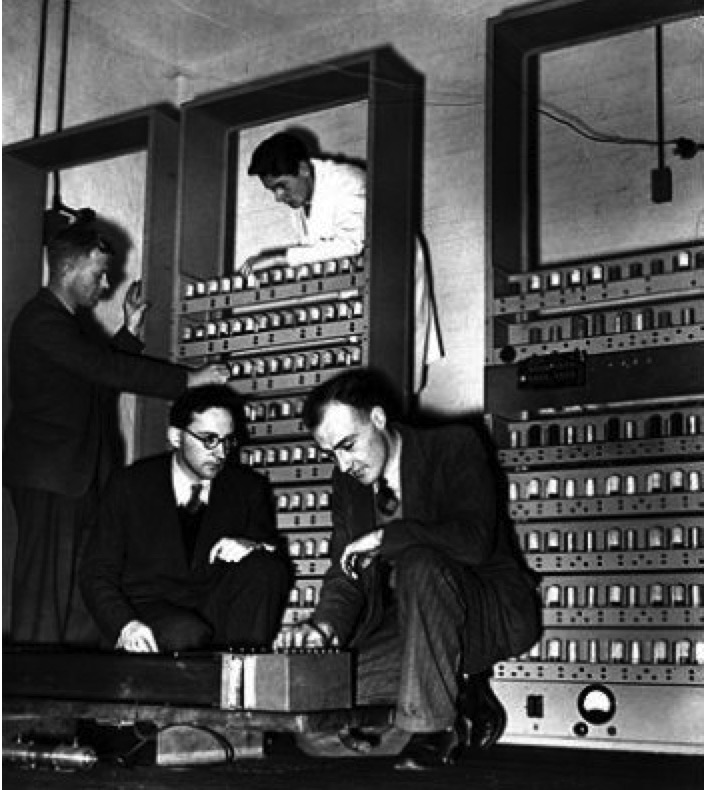History (1949): Electronic Delay Storage Automatic Calculator Employs Delay-Line Storage
Providing memory for first stored-program computer
This is a Press Release edited by StorageNewsletter.com on February 21, 2018 at 2:22 pmThis article comes from the Computer History Museum.
1949: EDSAC computer employs delay-line storage
Mercury-filled delay line provides memory for first stored-program computer
Maurice Wilkes with EDSAC (1949)
(University of Cambridge Computer Laboratory)

A delay line stores information in serial form by continuously circulating data through a liquid or solid medium.
A piezo-electric transducer converts a digital electronic signal into a series of pulses that travel through the line. A second transducer receives and amplifies the signal for transmission back to the source. Information is recirculated until accessed or changed by the computer. The physical length of a line determines the amount of information that may be stored.
Co-inventor of the ENIAC machine, J. Presper Eckert who worked on mercury-filled tubes for reducing clutter in WWII radar systems, adapted and in 1947 filed for a patent on their application to storage. In May 1949, Maurice Wilkes built EDSAC (Electronic Delay Storage Automatic Calculator), the first full-size stored-program computer, at the University of Cambridge Mathematical Laboratory, England, with 512 35-bit words of memory, stored in 32 mercury delay lines holding 576 bits each. The first Univac computer shipped to the U.S. Census Bureau in 1951 included seven 1.5KB memory units with an average access time of 222 microseconds. Each unit held 18 mercury-filled tubes weighing a total of nearly 800lbs.
Mechanical magneto-strictive delay lines offered more convenient and reliable lower capacity storage. An electromagnet twists a solid wire one way or the other to represent a one or a zero that is propagated as an ultrasonic signal through the wire. The Ferranti Sirius commercial computer of 1964 included 1,000 words of delay line storage.
They were used on early desktop calculators such as the Friden EC130 (1964), Olivetti Programma 101 (1965), and Litton Monroe Epic 2000 machines (1967). By the 1970s semiconductor memory replaced delay lines in these applications.













 Subscribe to our free daily newsletter
Subscribe to our free daily newsletter

